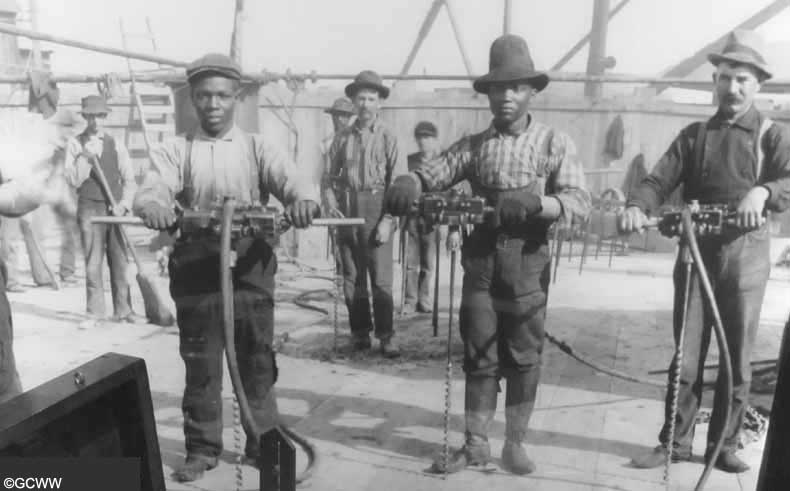GCWW Celebrates Black History Month!

GCWW Celebrates Black History Month! African Americans continue to make important contributions to the water industry while helping us lead the way to a more sustainable future. We recognize the many contributions the African American community has made to our industry, country, and world. We honor their achievements which help us accomplish our vision every day: a better world through better water!

The photo features Black Cincinnati Water Works employees working during the construction of the River Station.
In honor of Black History Month, Greater Cincinnati Water Works (GCWW) would like to recognize Granville T. Woods. Granville T. Woods (1856–1910) was nicknamed "The Black Edison" because of his numerous inventions and patents. He was the first African American to be a mechanical and electrical engineer, and he was even self-taught.
Woods earned his first patent in 1884 for a steam boiler. GCWW would not have made great strides without this invention! The old pumps at River Station were powered by steam that was produced in boilers. He also invented the Synchronous Multiplex Railway Telegraph, a device that sent messages between train stations and moving trains. His work assured a safer and better public transportation system for U.S. cities because it allowed railroad workers to know where the trains were on the railway, preventing many collisions and deaths. Before this invention, no one knew precisely when a train was coming down the tracks. This was tremendously beneficial for the new Cincinnati Water Works (CWW) because the River Station was built using railroads, both locally and regionally. Woods eventually registered twenty patents between 1900 and 1907 for electronic train control devices.
Granville T. Woods was an exceptional inventor and he greatly improved water systems and safety in the early 1900s.
In honor of Black History Month, Greater Cincinnati Water Works (GCWW) would like to recognize Saint Elmo Brady. Saint Elmo Brady was born on December 22, 1884, in Louisville, KY. He was the first African American to receive a Ph.D. in chemistry. Equally as significant, Brady went on to build chemistry curricula, faculty, programs, and facilities at four major historically Black colleges and universities (HBCUs), where he and his colleagues mentored multiple generations of African American chemists.
Brady published three scholarly abstracts between 1914 and 1915 and collaborated with Professor George Beal on a paper titled “The Hydrochloride Method for the Determination of Alkaloids,” published in the Journal of Industrial and Engineering Chemistry.
Brady’s method to determine alkaloids can be linked to some of the analytical tools used in water treatment labs today.
